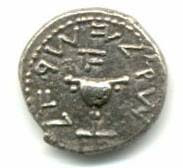Collecting ancient coins can be: fun; an investment; done to satisfy your collecting urge; a tangible connection to history; a gateway to expanding your knowledge of the ancient world; a place to throw some of your disposable income; a great way to impress your friends and relatives; a source of personal satisfaction; a way to contribute to our understanding of the ancient world; and much more.
I will have a series of posts that reflect my opinions on how one can get started collecting/investing/possessing ancient coins.
My suggested first step is to browse around and see what fits your interest and budget. Go to various coin dealers’ web sites and look at the coins and prices. You don’t need thousands or even hundreds of dollars to start collecting. Many dealers offer auctions or fixed price lists where you can buy coins for a modest sum, especially if you do not decide to focus your collecting on the gold coins of the Twelve Caesars (more on them later). Try to see if the area you are interested in has coins that apeal to you and also fit your budget.
Also don’t forget your local coin dealers, they may have ancient coins and they will likely let you hold them and the local dealer is often an excellent starting point if they are knowledgeable about ancient coins.
Once you’ve browsed around and seen what the prices are like, you can decide what to collect. Some collectors prefer to collect a representative type series. For example, many collectors try to buy one coin of each of the Roman Emperors. Some prefer thematic collections, such as depictions of animals, buildings, or military items upon coins. Others prefer regional collections, and still others collect on an eclectic basis and buy whatever coins strike their fancy. There really is no wrong way to collect ancient coins, and you can collect and organize your collection as you see fit.
One note of warning: once you hold in your hand a shiny silver, bronze or gold coin that is over 1000 to 2000 years old, you may not only swell with the pride of ownership of this historic item, you might be found by others holding and staring at it while crooning…”yes, my precioussss, I have my precioussss, mine!”
The next post in this series will discuss grading and some essential coin books and resources.
Part 2 in this series can be found here.
Part 3 can be found here.
Wednesday, October 15, 2003
Subscribe to:
Post Comments (Atom)

No comments:
Post a Comment